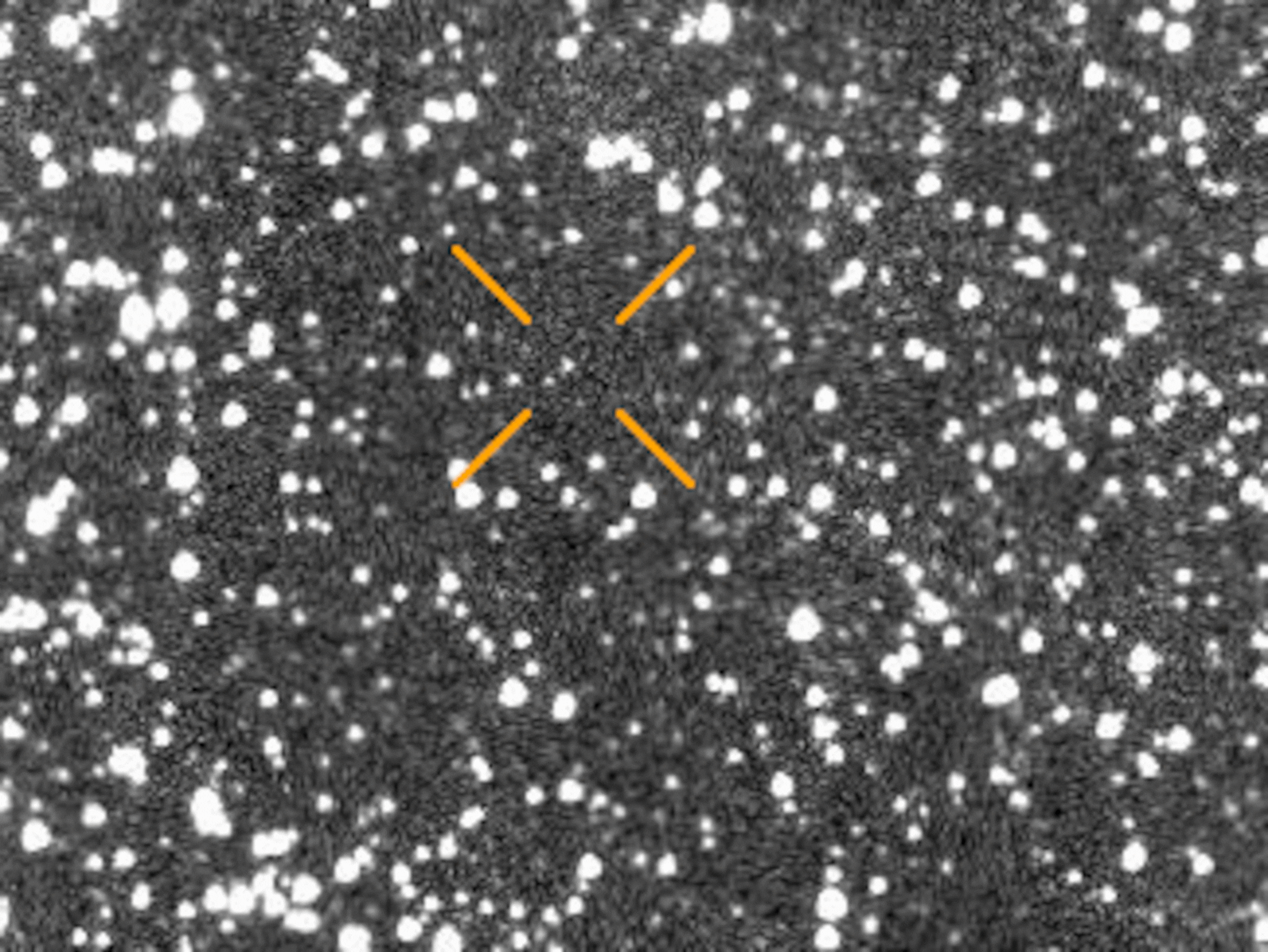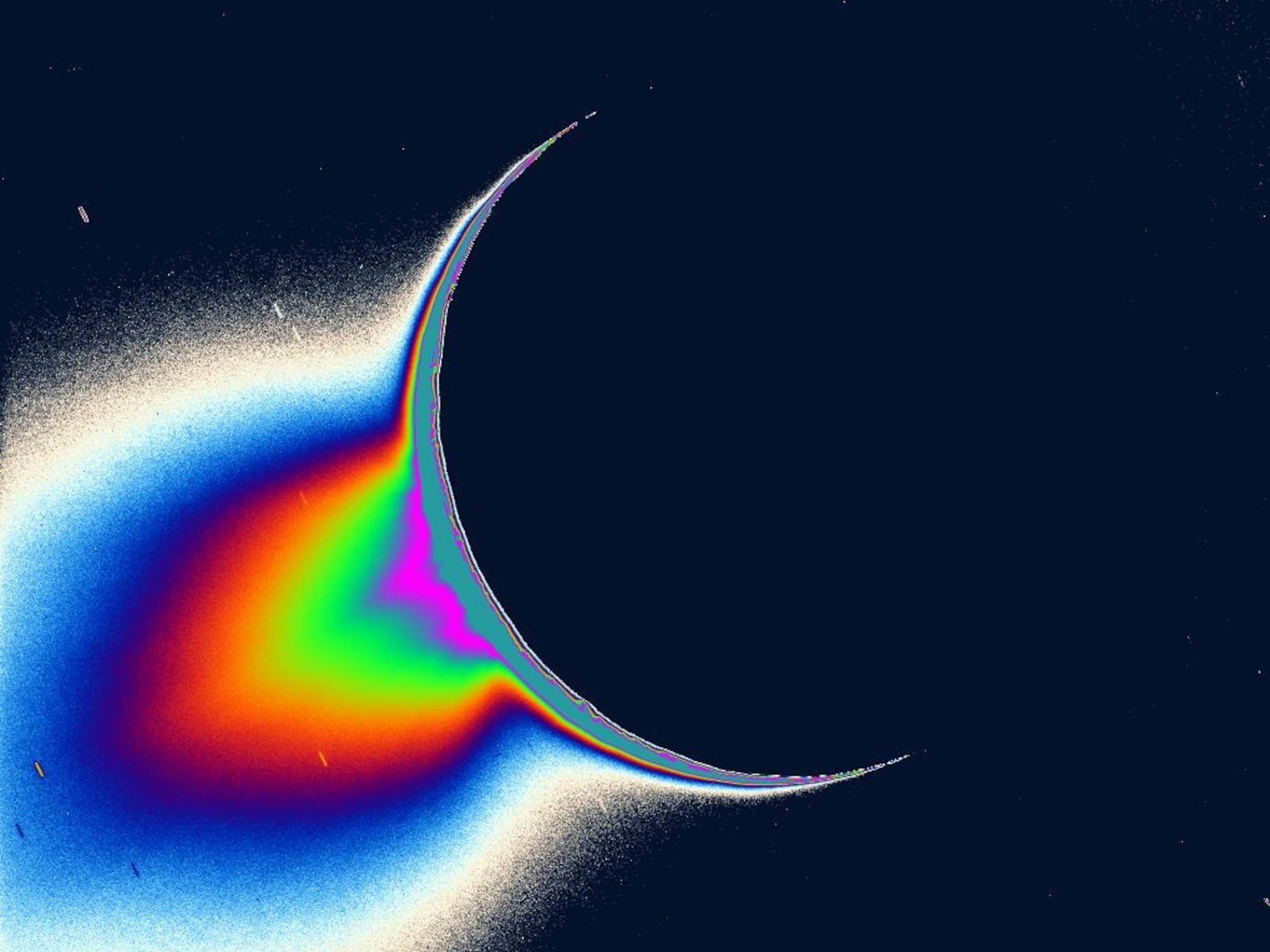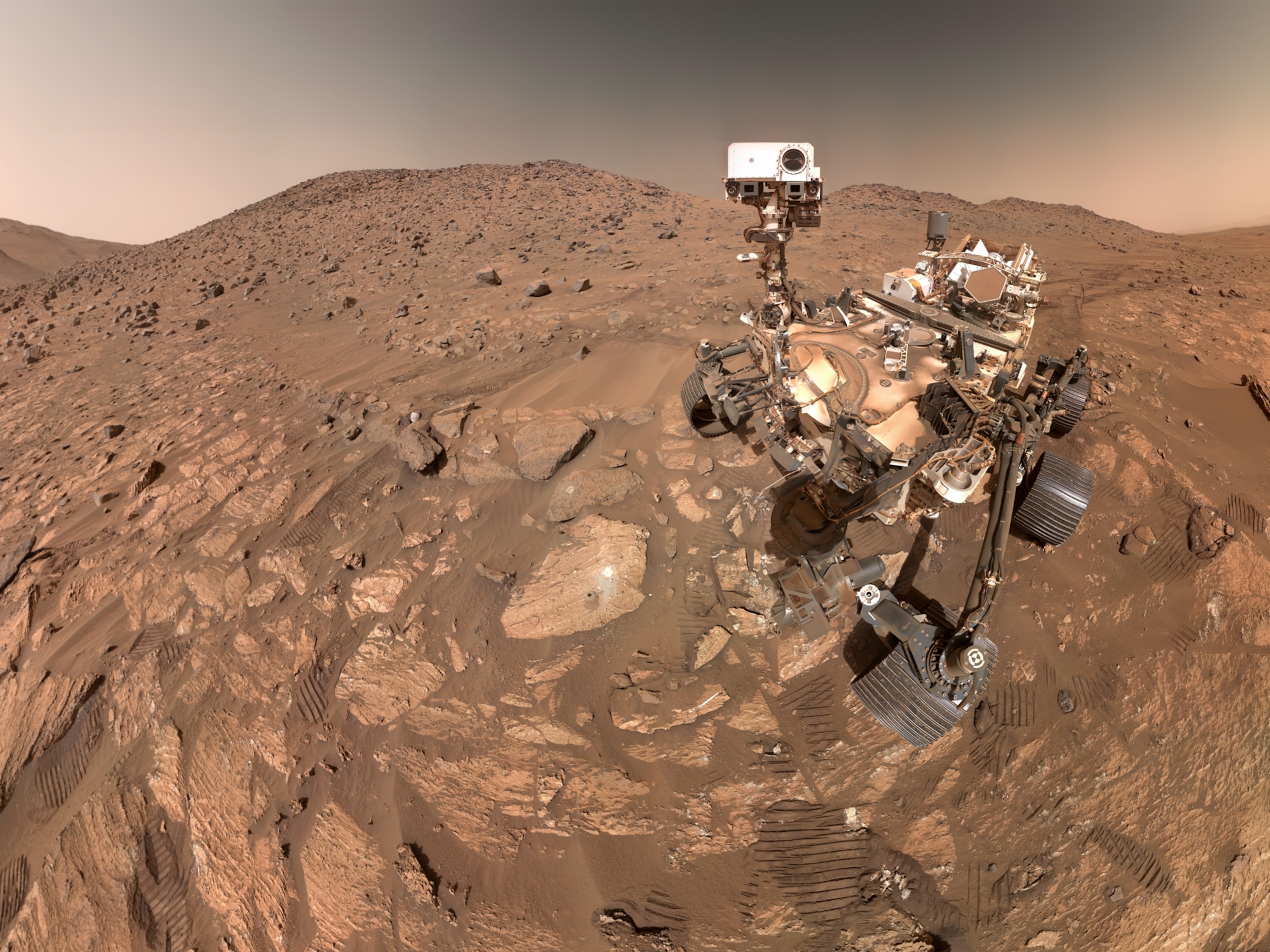
Astronomers Find a Long-Lost Ocean on Mars
The ancient sea covered a fifth of the planet's surface, to a depth of at least a mile.
Astronomers using some of the world's most powerful telescopes have determined that an ocean at least a mile deep covered a significant fraction of the Martian surface four billion years ago.
The research, reported Thursday in the journal Science, reinforces reams of earlier evidence that water once existed on the surface of the red planet, leaving traces such as stream pebbles, ancient shorelines, river deltas, minerals that must have formed in a watery environment, and more. (Video: NASA's Mars Phoenix once detected snow falling on Mars.)
This time, the evidence comes from an analysis of the water vapor that lingers today in the Martian atmosphere. A team of scientists led by Geronimo Villanueva, of NASA's Goddard Space Flight Center, took a series of measurements of sunlight reflecting off the Martian surface and through the atmosphere, which revealed the chemical composition of the atmosphere's vapor. The hydrogen in water, whether it's on Mars or on Earth, comes in two varieties: ordinary hydrogen, whose nuclei contain just a proton, and "heavy" hydrogen, also known as deuterium, with a proton and a neutron.
Both Earth and Mars started out with identical proportions of ordinary hydrogen and deuterium in their water. But on Mars, with its weaker gravity, the ordinary hydrogen has been gradually leaking from the atmosphere out into space. As a result, Mars now has a higher proportion of deuterium in its water than Earth does—seven times as high, in fact. Since the scientists can estimate the escape rate that would have led to this imbalance, Geronimo and his co-authors can calculate how much water overall there once was.
It would have been enough, they say, that if it had covered the entire planet evenly, it would have reached a depth of about 450 feet (137 meters). In practice, says Geronimo, "it probably would have formed an ocean in the northern hemisphere, which has a consistently lower altitude."
"Their results are quite believable," says James Kasting, a planetary scientist at Penn State. But they probably suggest only the minimum amount of water that pooled on the ancient surface of Mars, he says. "My guess is that the true amount of water was much larger."
The reason: A paper Kasting co-authored in 2014 argues that the early Martian atmosphere was unusually rich in heavy hydrogen and that much of it escaped along with the ordinary variety. That would skew any calculations based on today's values, he says.
Either way, the evidence continues to mount that Mars was once far wetter—and, since the water was mostly in liquid form rather than in the icy polar caps where it's now locked up, much warmer—than it is today. That, along with increasing signs that the ancient chemical environment was hospitable to biology, means support for the notion that life might once have existed on Mars is only getting stronger.
Follow Michael D. Lemonick on Twitter.





